What is the Doppler Effect?
- The doppler effect is the change in the observed frequency of a wave between the source and the observer when the source or the observer is moving.
- The change in frequency is only observed, meaning there isn't an actual difference in frequency, just a perceived one from the perspective of the observer.
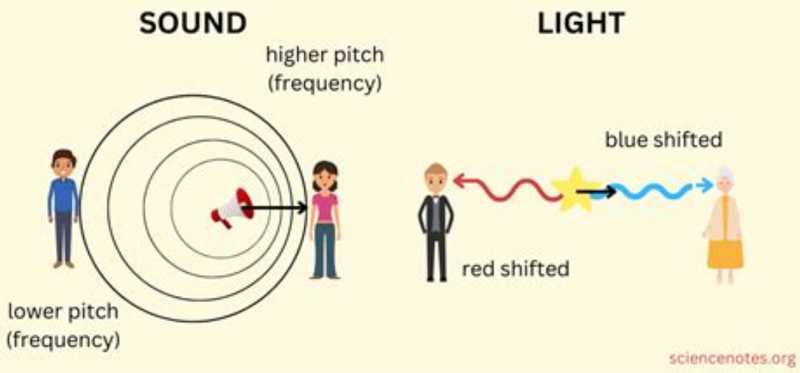
- The reason for the doppler effect is that if a source is emitting wavefronts at a constant rate, then they will be closer together if the source of the wavefronts is moving closer.
- Likewise they will be further apart if the source is moving away.
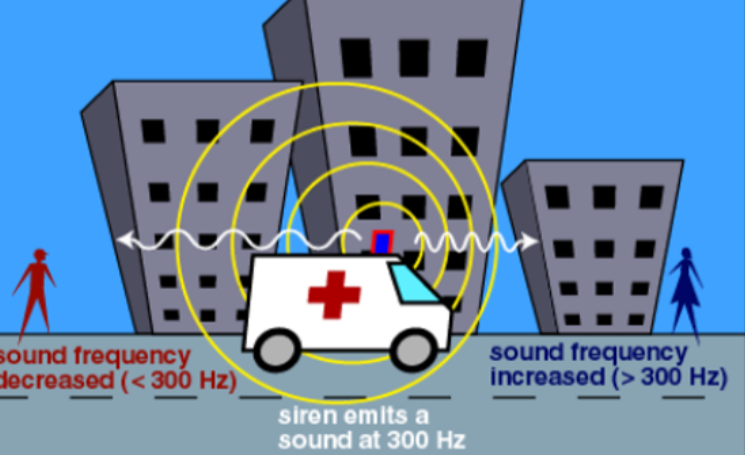
- Go to this link for an animated demonstration.
Doppler Effect and Light
- While the doppler effect is most commonly observed in sound waves, it affects all sorts of waves, including light.

- As a start is moving towards an observer, the frequencies of light will appear to increase, causing them to appear more bluish.
- This is called "blue shift".
- As the star moves away from the other observer, the frequencies of light will appear to decrease, causing them to appear more bluish.
Absorption Spectra
- Another way to show red shift and blue shift are absorption spectra.
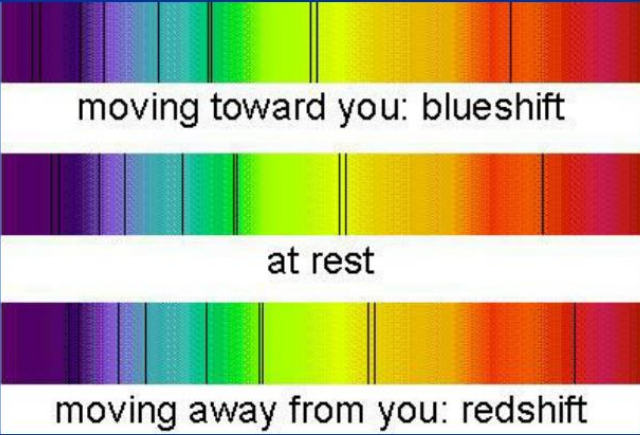
- The black lines represent different absorption spectra.
- We discussed how when white light is refracted in a prism, it is dispersed and the different colors of the spectrum become visible.
- However, when white light goes through a gas and then goes through a prism, certain wavelengths seem to be missing.
- These are the absorption spectra, as they are the frequencies of light which were absorbed by the gas.
- Atomic emissions and absorption lines occur at well-known wavelengths.
- If absorption spectra are observed when the light source is moving, then they appear diferent.
- Although continuous spectra are identical, the black lines, which are characteristic of certain elements, are all shifted towards either the red or blue end of the spectrum, although their distances from each other remains the same.
- As the star is moving closer, they shift towards blue, where frequency is higher.
- This is blue shift.
- As the star is moving away, they shift towards red, where frequency is lower.
- This is red shift.
Doppler Effect and Light Calculations

- Keep in mind these equations only work if the velocity of the source is smaller than the speed of light.
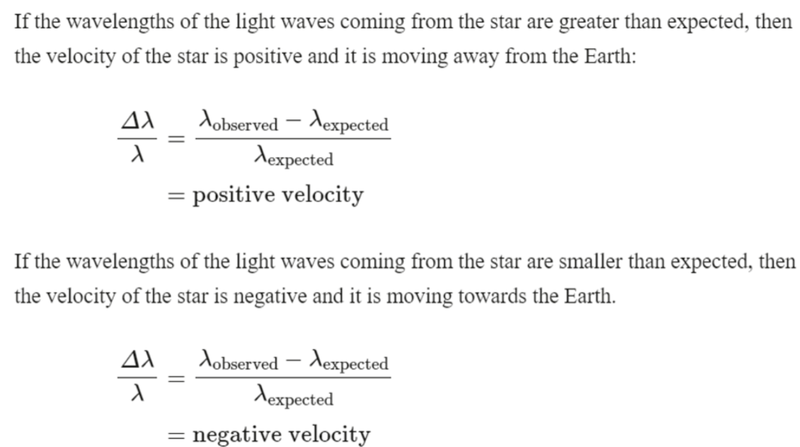
- A change in frequency can likewise be used to determine velocity, as the speed of light c is a known constant.
Doppler Effect Calculations
- Several calculations are used to determine wavelength, frequency, observed wavelength, observed frequency, etc. in the Doppler effect.
Moving Source
- If the source of the waves is moving, then the following are used:
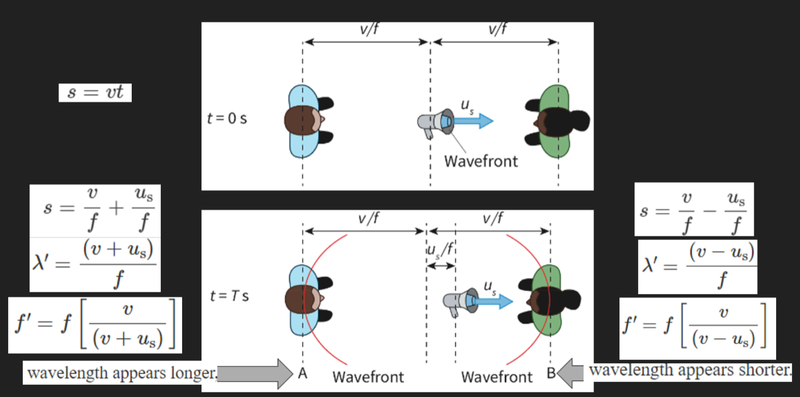
- s represents distance between the source and the observer.
- v represents the velocity of the waves.
- uₛ is the velocity of the source.
- f represents the actual frequency of the wave and λ the actual wavelength.
- f' represents the observed frequency of the wave and 'λ the observed wavelength.
Moving Observer
- For a moving observer, the wavelength does not appear to change, instead, it is the speed of sound that appears to change.
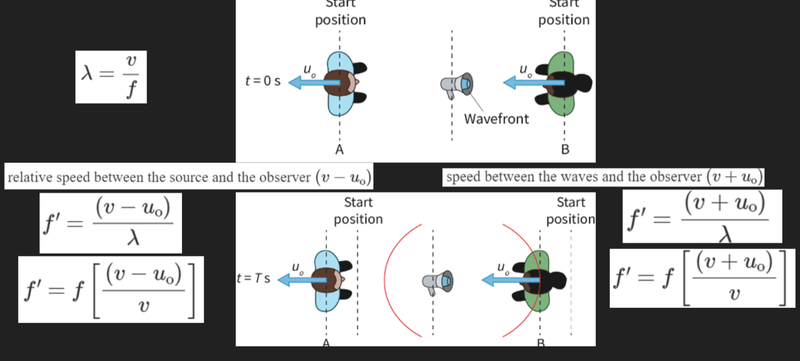
- v represents the velocity of the waves.
- uₒ is the velocity of the observer.
- f represents the actual frequency of the wave.
- f' represents the observed frequency of the wave.
Sources
https://sciencenotes.org/doppler-effect-definition-formula-and-examples/
https://ophysics.com/waves11.html